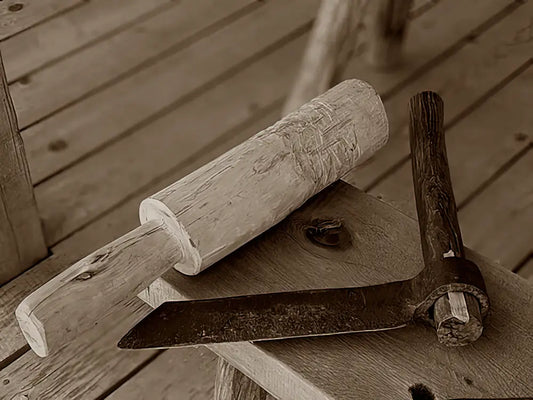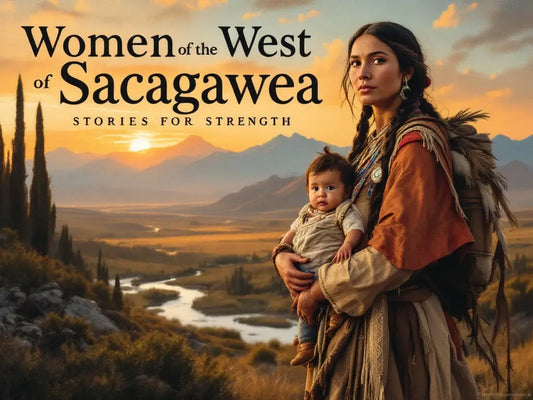
The Shingle Froe: A Tool That Built the Old West
Share
The Shingle Froe: A Tool That Built the Old West
When we think of the tools that built the Old West, images of hammers, saws, and axes often come to mind. But tucked away in the annals of history is a lesser-known yet equally vital tool: the shingle froe.
What Is a Shingle Froe?
The shingle froe is a simple yet ingenious tool used for splitting wood into thin, flat pieces, commonly known as shingles. These shingles were essential for roofing, siding, and other construction projects in the rugged frontier. The froe consists of a flat, sturdy blade attached to a handle, and it works in tandem with a wooden mallet or club. Together, they make up a system for splitting wood with precision and control.
How Was It Used?
Using a froe required both skill and patience. First, a log was cut into manageable sections. The froe blade was then driven into the wood grain using a mallet, and the handle was twisted to split the wood along its natural fibers. This method allowed settlers to produce uniform shingles for their homes, barns, and outbuildings.
Origins and Historical Significance
The froe’s origins trace back to Europe, where similar tools were used for centuries. When settlers brought the froe to America, it became indispensable in the Old West. With limited access to manufactured goods, pioneers relied on tools like the froe to craft essential building materials from the abundant forests around them.
Why It Matters Today
While the shingle froe may have faded into obscurity, its legacy lives on in the craftsmanship and ingenuity it represents. It’s a reminder of the resourcefulness required to thrive in the harsh conditions of the frontier.
The Froe and Double R Western™
At Double R Western™, we celebrate tools like the froe that shaped the heritage of the West. They’re a testament to the cowboy ethics of hard work, self-reliance, and creativity. Whether you’re building a cabin or simply appreciating the craftsmanship of the past, the shingle froe is a symbol of Western resilience.



